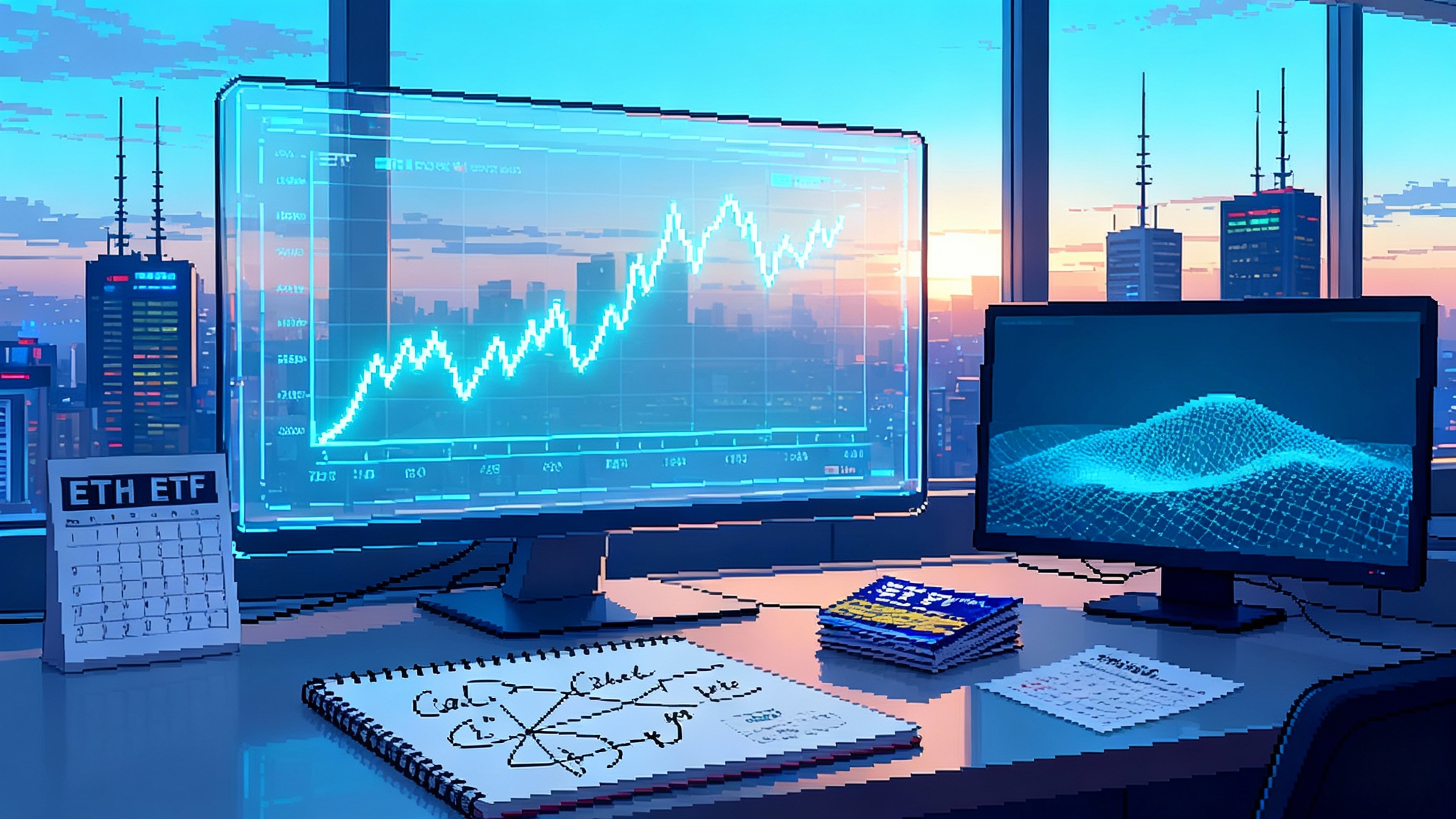Altcoin ETFs Are Here: SEC Fast-Tracks and Doge Debuts
On September 18, 2025 the SEC’s new generic listing standards turned crypto ETFs into a rules-based process. Hours later the first U.S. Dogecoin ETF hit the tape. Here is how Solana and XRP could follow, who wins, and where risks now live.

The day altcoin ETFs went mainstream
It finally happened. The U.S. Securities and Exchange Commission approved generic listing standards that let exchanges list spot commodity ETPs, including those backed by digital assets, without a bespoke, months-long approval cycle. The vote came on September 17 and the change became the story of September 18 as markets digested what it means. The agency framed it as a shift to a rules-based pathway with investor protections intact. You can read the Commission’s own summary of what was approved and why in its press release, which is the primary reference for the new framework, SEC approves generic standards.
Then the headline that made it unmistakable: the first U.S. Dogecoin ETF began trading the same day. That is not a backdoor futures product or a synthetic note. It is spot exposure packaged for a brokerage account and it launched on a major venue. The Financial Times first flagged the listing and key terms, including fees and venue, in its report, first Dogecoin ETF listing.
Taken together, today rewrites the timetable and mechanics for getting non-bitcoin, non-ether exposure into regulated wrappers. It puts a clock on Solana and XRP. It foreshadows a fee war. It also concentrates a lot of operational risk in a small number of custodians and market makers.
What actually changed in the rulebook
Before this week, every spot crypto ETF or ETP lived and died by a case-by-case review with two separate filings, one from the exchange and one from the issuer, and a decision window that could stretch to 240 days. The new framework lets national exchanges adopt generic listing standards for commodity-based trust shares that hold spot assets. If a product meets those standards, the exchange can list it without a new Commission order. Issuers still register their securities the usual way, but the listing itself rides a checklist rather than a bespoke policy fight.
In practice, that means:
- A shorter launch cycle. The maximum time from filing to trade can compress to roughly 75 days if the product is clean and meets the standards posted by the exchange.
- A defined set of eligibility gates. The standards focus on surveillance, pricing, reference data, custody, creation and redemption mechanics, and disclosure.
- A shift in workload. Exchanges shoulder more up-front responsibility to police their own listing criteria. Issuers know the target and can align service providers early.
The Commission also paired the standards with approvals around options on crypto indexes and a large-cap digital asset fund. That signals it sees a broader ecosystem forming around these spot products rather than a one-off exception.
Why this unlocks Solana, XRP and more
Bitcoin and ether ETFs normalized a surveillance approach and custody model that regulators now accept. The new standards take those lessons and make them portable. Two things matter for the next wave:
- Price discovery and surveillance. Exchanges need to show they can detect and deter manipulation. That has historically leaned on surveillance-sharing agreements and robust reference pricing across multiple venues.
- Operability and custody. The plumbing must be ready on day one. That includes a qualified custodian, clear creation and redemption procedures, and transparency around fees and risks.
Solana and XRP are the first obvious beneficiaries. Both have deep spot markets, established U.S. trading interest, and multiple issuers already engaged with service providers. Products tied to litecoin, bitcoin cash, and cardano also move up the list, especially if issuers can demonstrate reliable pricing and surveillance coverage.
The Q4 2025 launch cadence to expect
Here is a pragmatic view of how the calendar may play out, assuming no surprise enforcement actions against specific tokens and that issuers file in line with the new template.
- October openers. The first wave targets headline assets with heavy U.S. demand and existing infrastructure. Expect at least one Solana ETF and an XRP ETF to clear the checklist and hit a listing venue in October. Issuers that pre-built custody, authorized participant relationships, and marketing will have the edge.
- Mid to late October follow-ons. A second wave brings additional Solana and XRP funds from competing issuers with slightly lower fees or differentiated structures. A few will offer minor twists such as different index methodologies or risk controls, but most will be plain vanilla spot exposure.
- November expansion. Litecoin and bitcoin cash join the party, likely with at least one basket product that blends BTC, ETH, SOL, and XRP into a single line item. If a cardano product is coming this year, this is the window.
- December cleanup. Late entrants will try to squeeze in before year-end to capture taxable rebalancing flows. Expect at least one lower-fee clone in each major asset and possibly the first niche memecoin attempts beyond DOGE if exchanges are comfortable that listing standards are met.
The gating factor will not be paperwork. It will be service provider capacity. Custodians, auditors, key market makers, and AP desks can only stand up so many products at once, and they will prioritize issuers with scale and clean operational playbooks.
Liquidity will migrate along the path of least friction
We have seen this twice already. First with bitcoin ETFs in January 2024. Then with ether spot ETFs in mid 2025. A meaningful slice of retail and advisory flow prefers to stay inside the brokerage and retirement system rather than wire to a crypto exchange, set up wallets, and manage private keys. Altcoin ETFs now create the same on-ramp for a broader token set.
The net effect:
- On-chain volumes dip at the margin as buy-and-hold allocators choose ETFs, while intraday trading concentrates in ETF shares during U.S. hours. Price discovery will still live across global crypto venues, but ETF prints will become the reference for many advisors and models.
- Creation and redemption helps tether ETF prices to the underlying. That compresses premiums and discounts and narrows spreads versus single-venue token trading. The more APs compete, the tighter it gets.
- Weekends and holidays become a stress point. Tokens trade 24/7. ETFs do not. Gaps on Monday open will be common after busy crypto weekends. Short-term traders will game that basis.
Spread compression and a coming fee war
Competition among issuers, plus AP desks eager to capture basis trades, will squeeze bid-ask spreads quickly on the largest altcoin ETFs. Expect:
- Spreads inside 20 to 40 basis points for SOL and XRP funds once two to three APs are active and inventory is seasoned.
- A glide path for fees. Early memecoin products launched with fees near 1.5 percent. Large issuers will undercut that for SOL and XRP to win assets. Anything above 0.95 percent will struggle once multiple choices exist. A sub 0.50 percent headline fee is very plausible by December for a flagship Solana ETF.
- Payment for order flow and internalization dynamics similar to BTC and ETH ETFs. Retail execution will often hit wholesalers who can match or better the NBBO once volumes stabilize.
Custody concentration just intensified
A small group of qualified custodians will likely sit behind most altcoin ETFs. Coinbase Custody remains the incumbent for many crypto ETPs, with Fidelity Digital Assets, Gemini, and Anchorage competing for mandates. That concentration is a double-edged sword.
- Benefit. Standardized controls, cold storage, insurance frameworks, and SOC examinations can scale quickly across multiple products.
- Risk. A control failure, an incident in a supported asset, or a sanctions screening misstep would ripple across dozens of funds at once. Issuers will diversify where they can, but service provider rosters will still cluster.
Expect more issuers to add secondary custody arrangements or use tri-party models to mitigate single-point exposure. Also watch for custodians to expand staking-related services for future products, even if those are not in the first wave.
Winners and losers
Winners
- Cboe and one of NYSE or Nasdaq. History suggests Cboe moves fastest on crypto listings. Whichever exchange pairs speed with tight market maker support will capture the first billion in altcoin ETF volume.
- Scaled issuers with crypto muscle memory. Bitwise, 21Shares, VanEck, and Fidelity have the teams and vendors already in place. Expect them to price aggressively and win early flows in SOL and XRP.
- APs and market makers with crypto desks. Firms that can quote ETF shares, source spot tokens across venues, and manage inventory risk will collect steady basis profits. The same names that dominated BTC and ETH ETFs will lead again.
Losers
- Smaller crypto exchanges in the U.S. Losing the incremental retail trader who wanted easy exposure to SOL or XRP hurts. Expect pressure on USD pairs and lower maker-taker revenue in Q4.
- High-fee niche issuers. A 1 percent plus fee may work for a first-to-market memecoin. It will not hold for large-cap altcoins once BlackRock, Fidelity, or Vanguard-adjacent issuers decide to compete.
- Single-custodian risk takers. Issuers that bet the farm on one provider will face hard questions from institutional allocators and may be skipped in model portfolios.
Retail risk is not reduced, only repackaged
An ETF wrapper removes private key risk and simplifies taxes. It does not change what you own. Dogecoin, Solana, and XRP remain volatile assets with narratives and technical risks that can shift quickly.
Key retail considerations now that exposure sits on TradFi rails:
- Time-of-day and weekend gap risk. Tokens trade around the clock. ETFs do not. Monday opens can gap through stops.
- Premium and discount drift. Arbitrage keeps things tight in liquid funds, but new or smaller funds can still drift in fast markets.
- Tax surprises. Most spot commodity trust shares issue 1099s. Some structures may generate different character of income, especially if the product ever engages in staking or income-like activities. Read the tax section before you size the position.
- Marketing gloss. A ticker and a bell do not turn a meme into a dividend stock. Suitability still matters.
The regulatory tripwires that still matter
Standards-based listings speed things up, but several red lines remain bright:
- Commodity status. If the SEC or a court determines a token is a security rather than a commodity, listing under commodity trust standards will not fly. Issuers will choose assets with the least classification ambiguity.
- Surveillance sufficiency. Exchanges must demonstrate robust surveillance and credible price sources. Thin tokens will struggle to prove this.
- Staking and yield. Any attempt to add staking inside an ETF will attract scrutiny. Expect separate filings and a slower path for yield-bearing designs.
- Custody and control. Qualified custodians must maintain clean asset segregation, insurance, and incident response. Any wobble will draw fast attention.
- Disclosures and marketing. Memecoin-themed products raise suitability and fair disclosure concerns. Exaggerated performance claims or celebrity tie-ins are a quick way to trigger enforcement.
Three plausible paths into year end
- Risk-on surge. SOL and XRP ETFs launch cleanly in October, fees drop below 0.70 percent, and flows top several billion by mid November. Crypto exchanges see softer USD volumes, while custodians report record assets.
- Orderly adoption. Launches arrive in waves, spreads tighten, but flows drip in as advisors complete due diligence and model updates. This is the base case.
- Policy shock. An enforcement action or classification pivot hits a prominent token. Listings pause, issuers regroup, and the market prices a higher regulatory risk premium.
What to watch next
- S-1 and 8-A filings from big issuers that name service providers for SOL and XRP. Those disclosures will tell you who is serious and how fast they can go.
- Exchange circulars that assign lead market makers and define opening procedures. Tight openings signal healthy AP participation.
- Fee cards. The first issuer to post a sub 0.50 percent management fee for a large-cap altcoin takes share and forces the rest to follow.
The bottom line
The SEC just took crypto ETPs out of the bespoke approval maze and put them on rails. That alone accelerates the timeline for mainstream altcoin exposure inside brokerage accounts. The same afternoon, Dogecoin’s ETF debut showed the pipeline is not theoretical. Expect Solana and XRP to follow quickly, spreads to compress, custody to concentrate, and fees to fall. The risks did not vanish. They moved into a wrapper that more people know how to buy.


